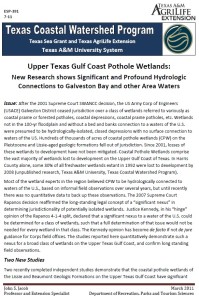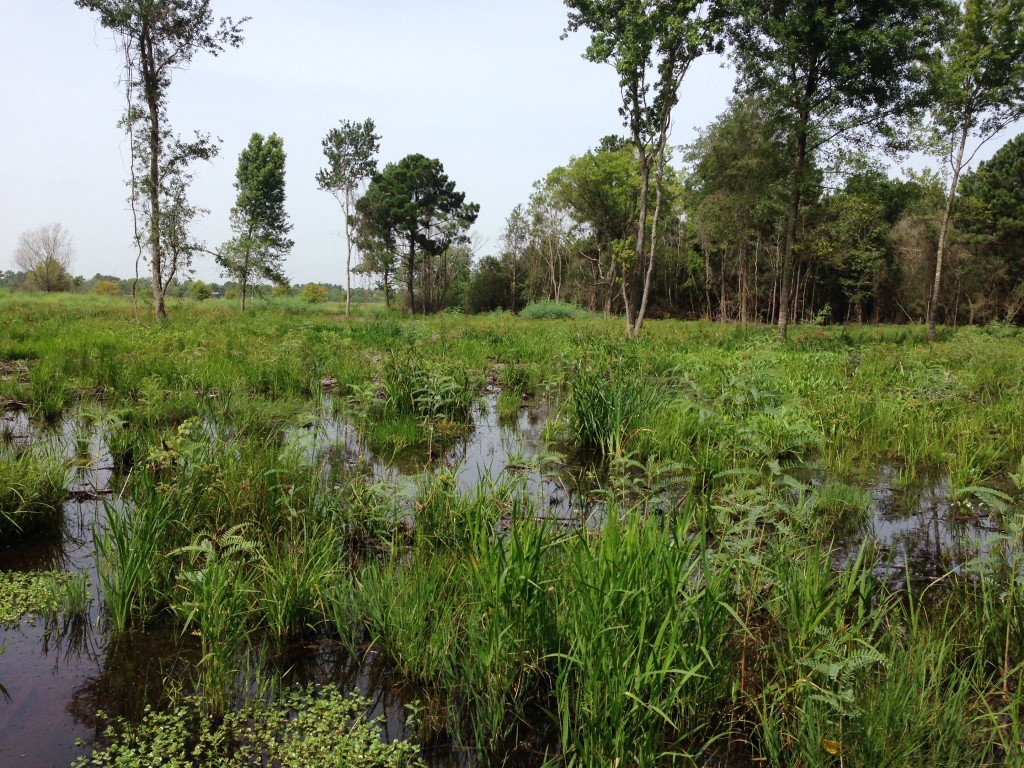
Click here to read TCWP’s Factsheet on these new wetland connectivity reports.
Coastal pothole wetlands comprise the vast majority of wetlands lost to development on the Upper Gulf Coast of Texas. Coastal pothole wetlands developed on the Pleistocene and Lissie-aged geological formations on the Texas coast, and have gone by many names: coastal prairie or forested potholes, coastal depressions, coastal prairie potholes, etc. This unique system of wetlands form closed depressions with no surface connection to waters of the US and often lack a bed and bank. For this reason, these wetlands have been largely classified as outside the jurisdiction of the Clean Water Act by the USACE Galveston District Regulatory Program.
For years, regional wetland experts have insisted that these wetlands actually do have a hydrological connection to waters of the US, but have not had the quantitative research to support these observations. Until recently….
Two new independent studies, have recently found that coastal pothole wetlands have a significant and persistent hydrologic connection to waters of the US. The depressions actually are frequently overtopped by surface runoff, even in dry years. This excess water flows downstream through swales and poorly drained flow paths, eventually reaching either an artifical path that connects to, or to traditional waters of the US themselves.
Studies Referenced
Forbes, M., R. Doyle, A. Clapp, J. Yelderman, N. Enwright, and B. Hunter. 2010. Final Report. Freshwater Wetland Functional Assessment Study. Contract No. 582‐7‐77820. Galveston Bay Estuary Program and Texas Commission on Environmental Quality.
Wilcox, B.P., D.D. Dean, J.S. Jacob, and A. Sipocz. 2011. Evidence of surface connectivity for Texas Gulf Coast depressional wetlands. Wetlands 31:451‐458. DOI 10.1007/s13157‐011‐0163‐x
 Texas Community Watershed Partners
Texas Community Watershed Partners 
